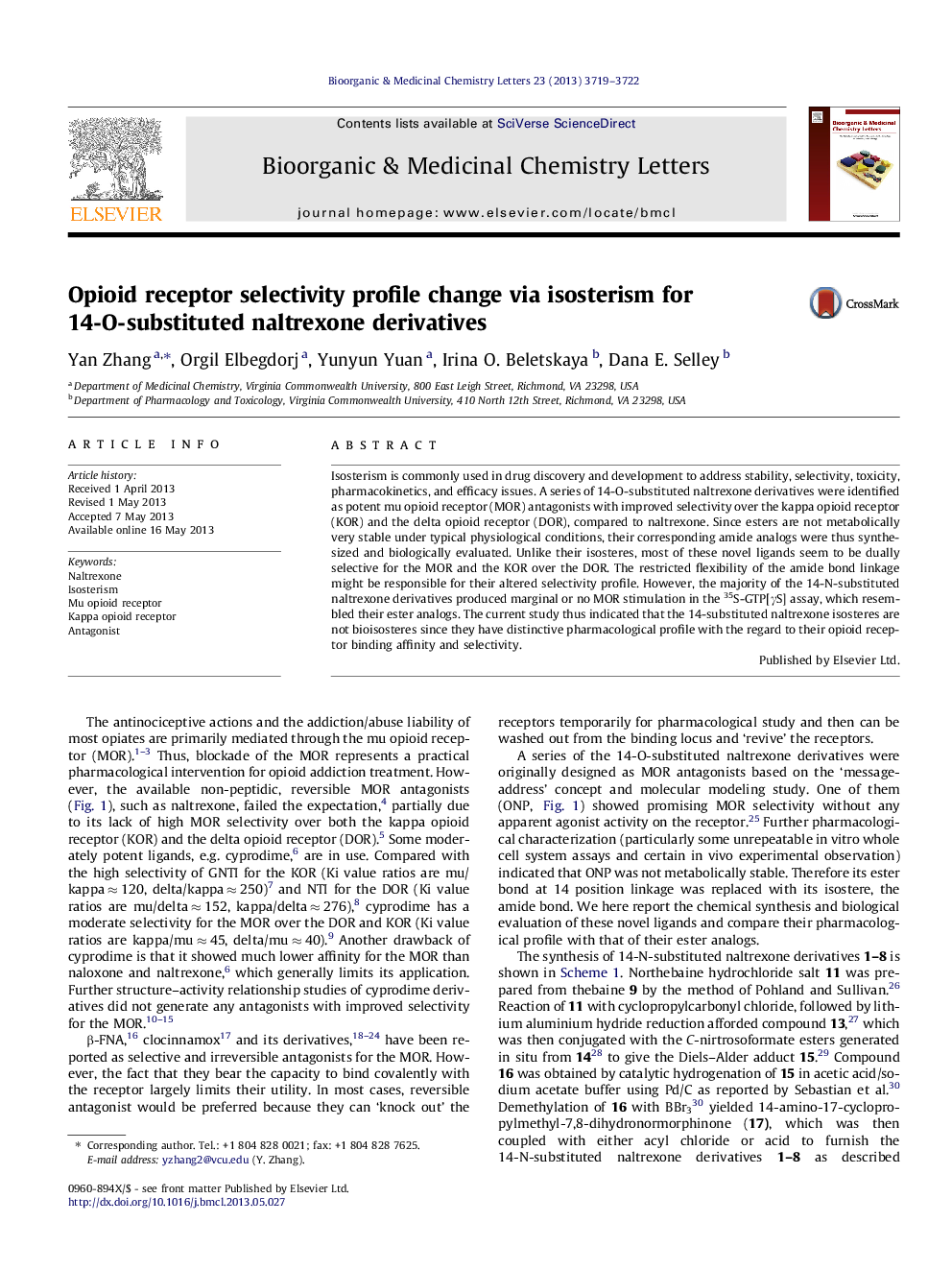| Article ID | Journal | Published Year | Pages | File Type |
|---|---|---|---|---|
| 10595499 | Bioorganic & Medicinal Chemistry Letters | 2013 | 4 Pages |
Abstract
Isosterism is commonly used in drug discovery and development to address stability, selectivity, toxicity, pharmacokinetics, and efficacy issues. A series of 14-O-substituted naltrexone derivatives were identified as potent mu opioid receptor (MOR) antagonists with improved selectivity over the kappa opioid receptor (KOR) and the delta opioid receptor (DOR), compared to naltrexone. Since esters are not metabolically very stable under typical physiological conditions, their corresponding amide analogs were thus synthesized and biologically evaluated. Unlike their isosteres, most of these novel ligands seem to be dually selective for the MOR and the KOR over the DOR. The restricted flexibility of the amide bond linkage might be responsible for their altered selectivity profile. However, the majority of the 14-N-substituted naltrexone derivatives produced marginal or no MOR stimulation in the 35S-GTP[γS] assay, which resembled their ester analogs. The current study thus indicated that the 14-substituted naltrexone isosteres are not bioisosteres since they have distinctive pharmacological profile with the regard to their opioid receptor binding affinity and selectivity.
Related Topics
Physical Sciences and Engineering
Chemistry
Organic Chemistry
Authors
Yan Zhang, Orgil Elbegdorj, Yunyun Yuan, Irina O. Beletskaya, Dana E. Selley,
